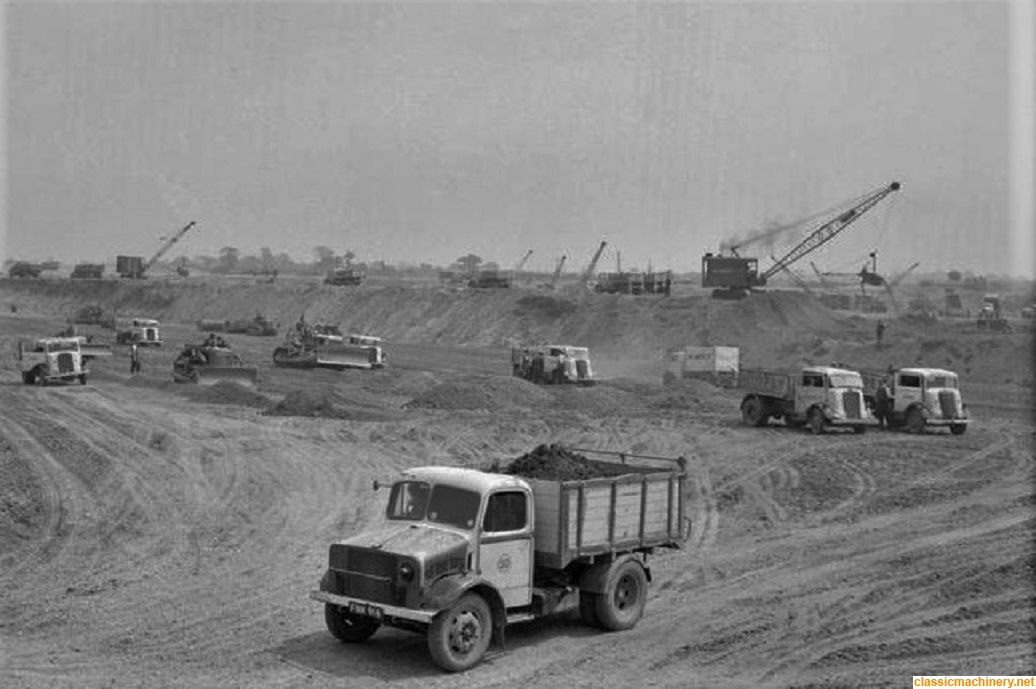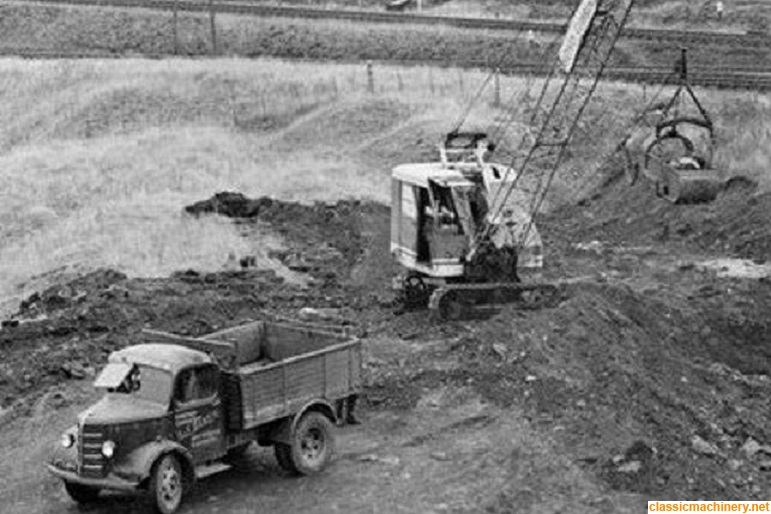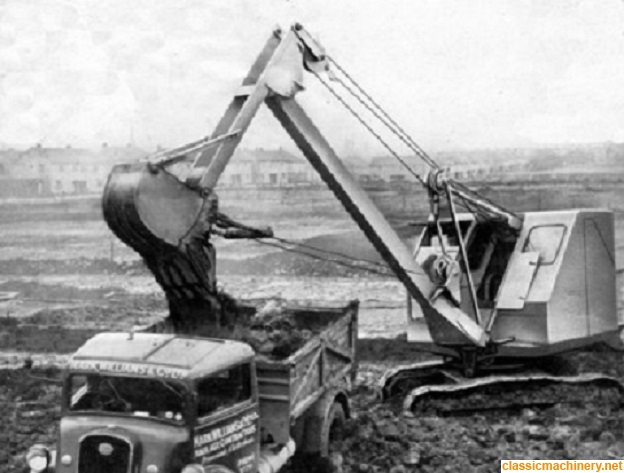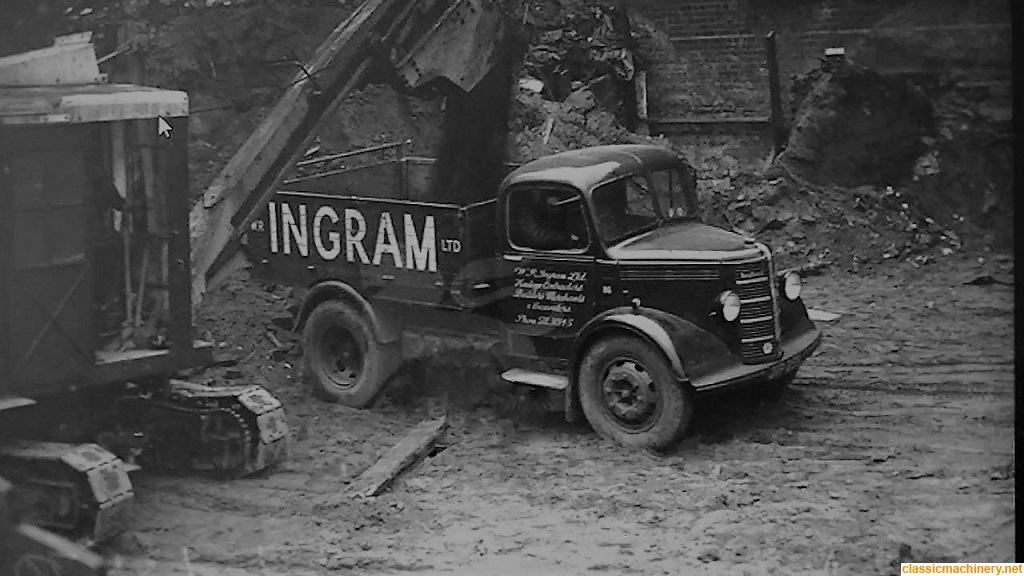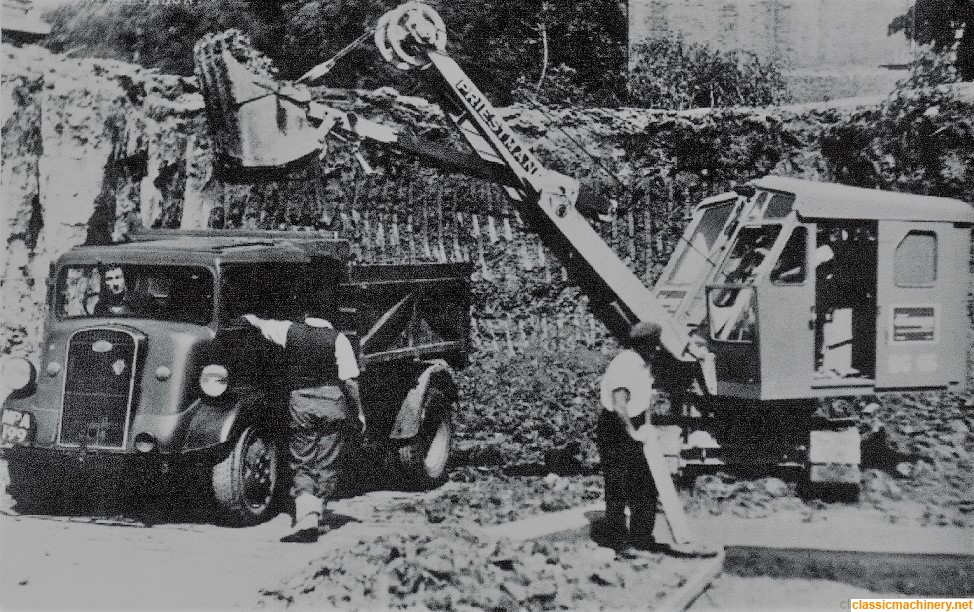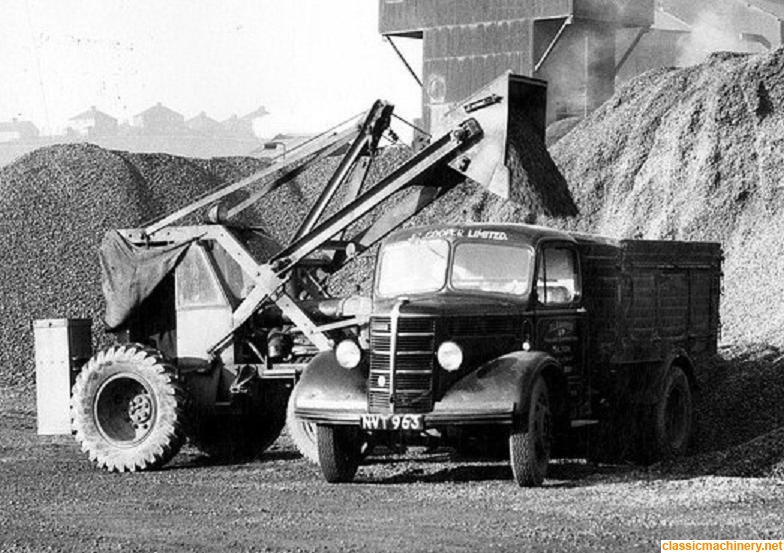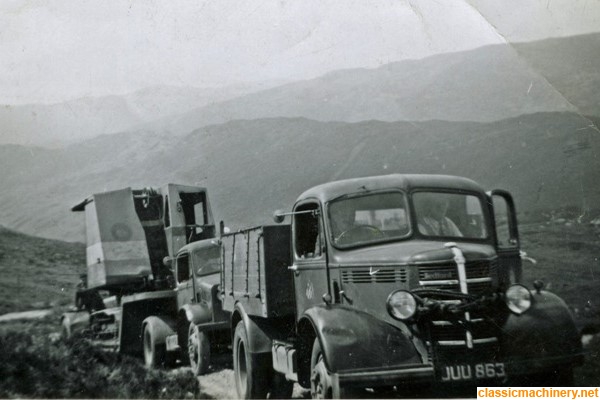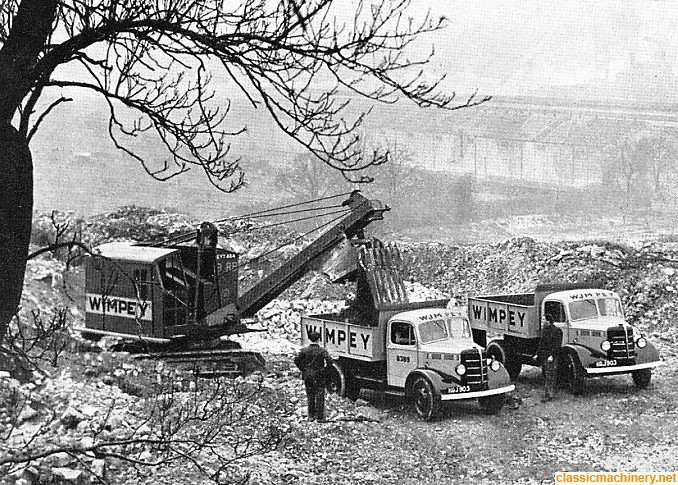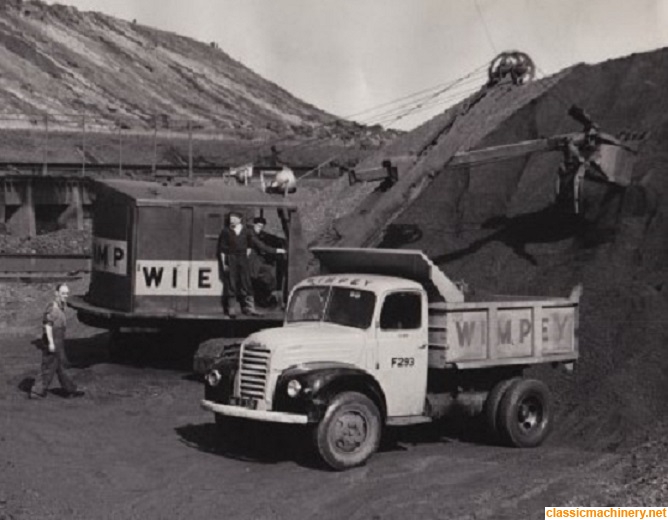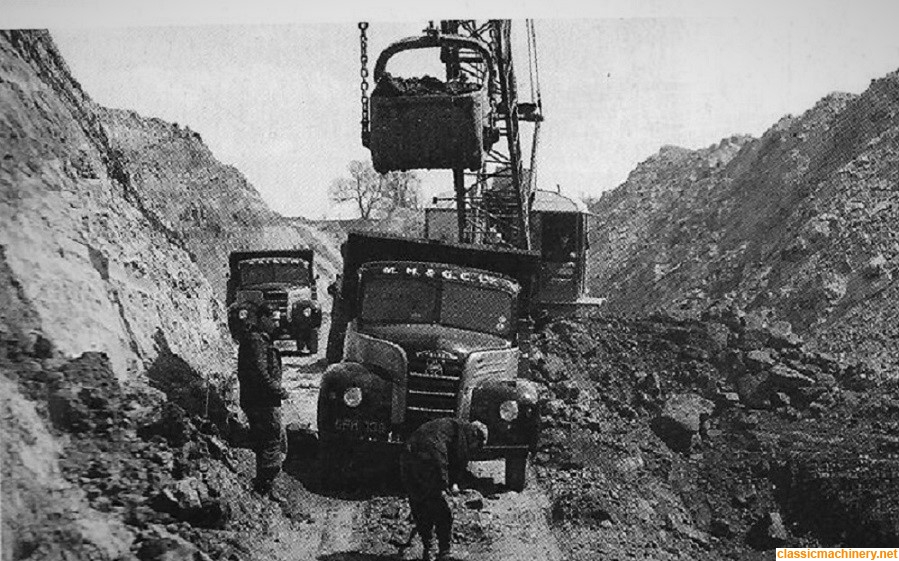Hi,
Here's a forgotten manufacturer from the past, Motor Rail Ltd.
I don't know if anyone besides Essex Pete and myself will remember the dumpers they made. They were introduced in 1939 and continued in production for some twenty odd years into the 1960s.
They were 3 yd. 4 ton machines. There were two models both powered by Dorman 2DWD 28 hp. diesels with Dixon-Abbott patent gearbox giving 3 forward and 1 reverse in two ranges. One model had the six gears skip first and the other had six speeds engine and driver end first.
This difference was achieved simply by turning the crown-wheel to drive off the opposite side of the pinion.
I found a pic of both models, the first pic of the Tarslag machine is probably circa 1950, the Priestman Wolf luffing shovel is I think a Mk 1 with wooden cab from the 1940s .
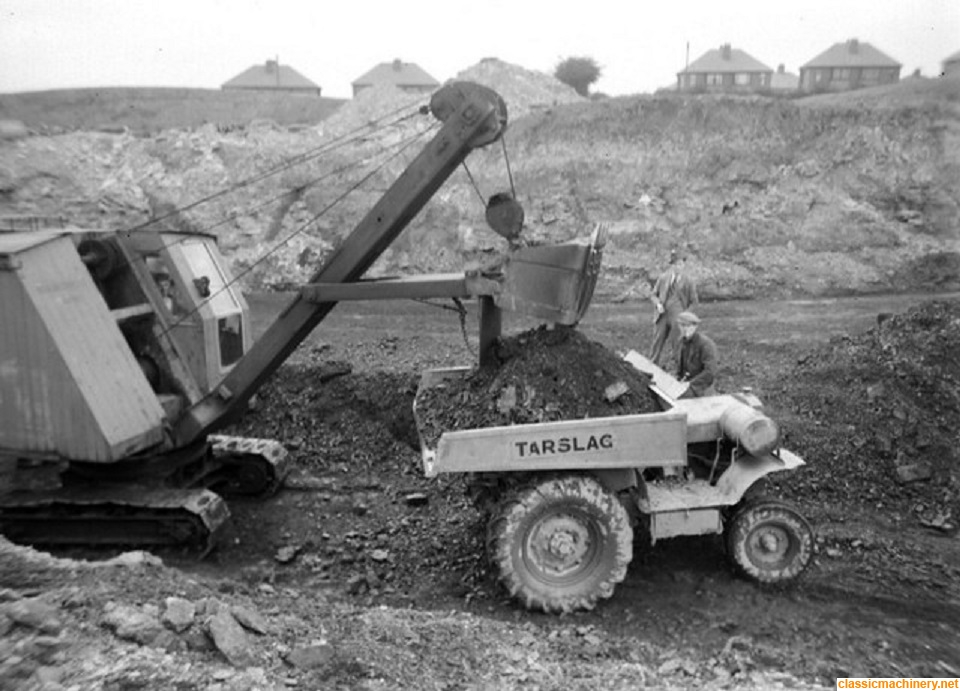
The one in the second pic. is being loaded by a Priestman Panther skimmer probably late 1950s.
Like the dumpers the Priestmans would have Dorman engines too, Dorman 4BK in the Wolf and a 4DWD in the Panther.
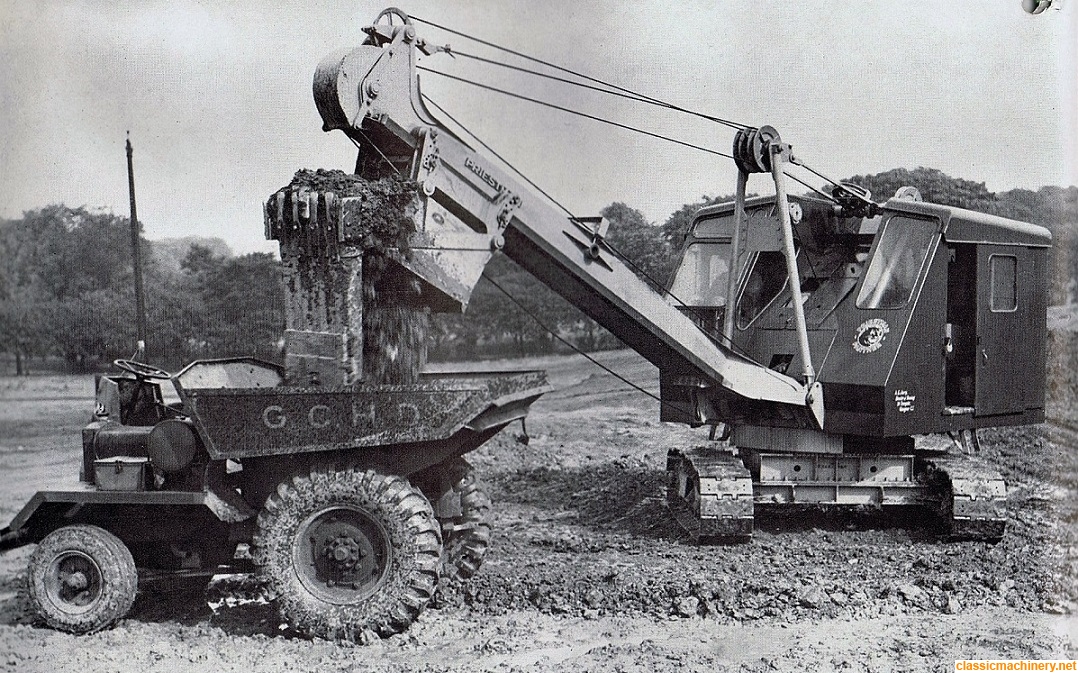
The Dixon Abbott 3 parallel shaft gearbox design was developed and patented in 1918 when Motor Rail and Dorman collaborated to design narrow gauge locos known as tractors for the army to get supplies to the trenches WW1. Some 600 were produced with Dorman petrol engines and David Brown building the Dixon Abbott gearboxes.
The dumper gearbox was developed from the original Dixon Abbott design, it was driven through a Simplex plate clutch, and direct coupled to the drive axle, (no prop-shaft).
I was surprised to find that an air cooled version of the dumper was later produced, but I have no knowledge of this. See below.
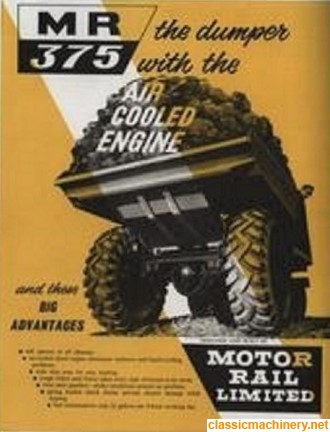
I am not at all surprised that the Foden chassis was purpose built the visual look of the crane is huge compared to the truck it is mounted on, reckon it would have crushed a standard chassis.
